We believe that proposed solution will allow completely change the way in which video monitoring systems are constructed.
Video monitoring systems are today build from multiple cameras watching around the environment of secured object. Part of cameras are fixed, part is able to move, part is equipped in zoom function. When camera is equipped in wide angle optics then moving objects are as small that identification is problematic. When camera is equipped in telephoto lens then moving object is big and easy to identify but we do not see what happen outside the field of view of such camera. Something important can happen there and monitoring system do not show it and do not record it.
There is a way to change the situation. Camera can have very high resolution (e.g. 16K – 133MPixels, 15360×8640) or above and wide angle lenses. In such case operator can observe on his screen selected part of video frame scaled up (digital zoom) but ALL frames are always recorded. Nothing is lost. Automatic detection of moving objects, weapons or behavior can be executed on whole frame.
Using very high resolution in cameras do not requires use very high resolution displays in control center. Classic HD monitors can be used because frames can be scaled down when whole frame have to be shown or part of frame can be presented. In case when 1 pixel of camera is equal to 1 pixel of display operator see maximum quality picture. To obtain that control center have to be equipped in decoders able to work with so big resolution and scaling.
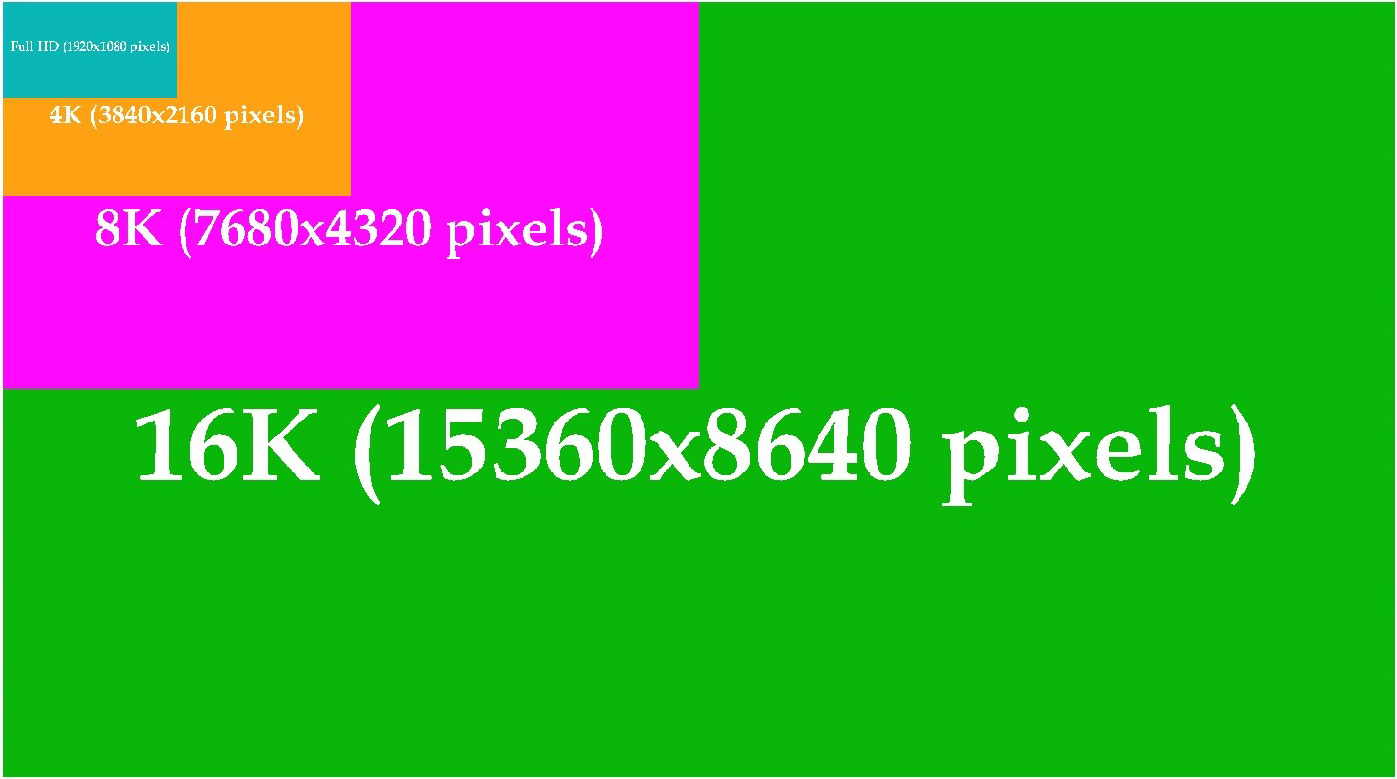
Image shows proportions between Full HD, 4K, 8K and 16K. Letters are proportional to the resolution (on 4K are 2x bigger than on Full HD, on 8K are 2x bigger than on 4k and on 16K are 2x bigger than on 8K)
Imagine fixed Gigapixel camera with wide angle optics placed in such a way that whole front of secured building is visible plus surrounding green areas. Operator can select freely what he wants to see by selecting point in the frame (focus point) and zoom in (digital zoom) to see details. Selected point will be center point of his screen.
Decoder can be equipped in functionality of automatic detection and classification of moving objects in the frame. In such case decoder is creating a script containing information about the time, position and size of any detected moving object (or object which is visible but should not be there). Script is recorded together with video stream.
Decoder can place graphical markers on the frame, which identify all detected objects and show it on one of monitors. Simultaneously decoder can show on other monitors detected objects scaled up (digital zoom). In case of moving objects window will follow the object to keep it in the center of monitor. What is important recorded stream allowing operators to see it multiple times each time changing focus points and zooming factor to see different areas in the frame.

Picture show example frame from 16K camera (133Mpixels) with resolution 22000×6000 pixels. Color frames shows where movement was detected. They have resolution of Full HD monitor.
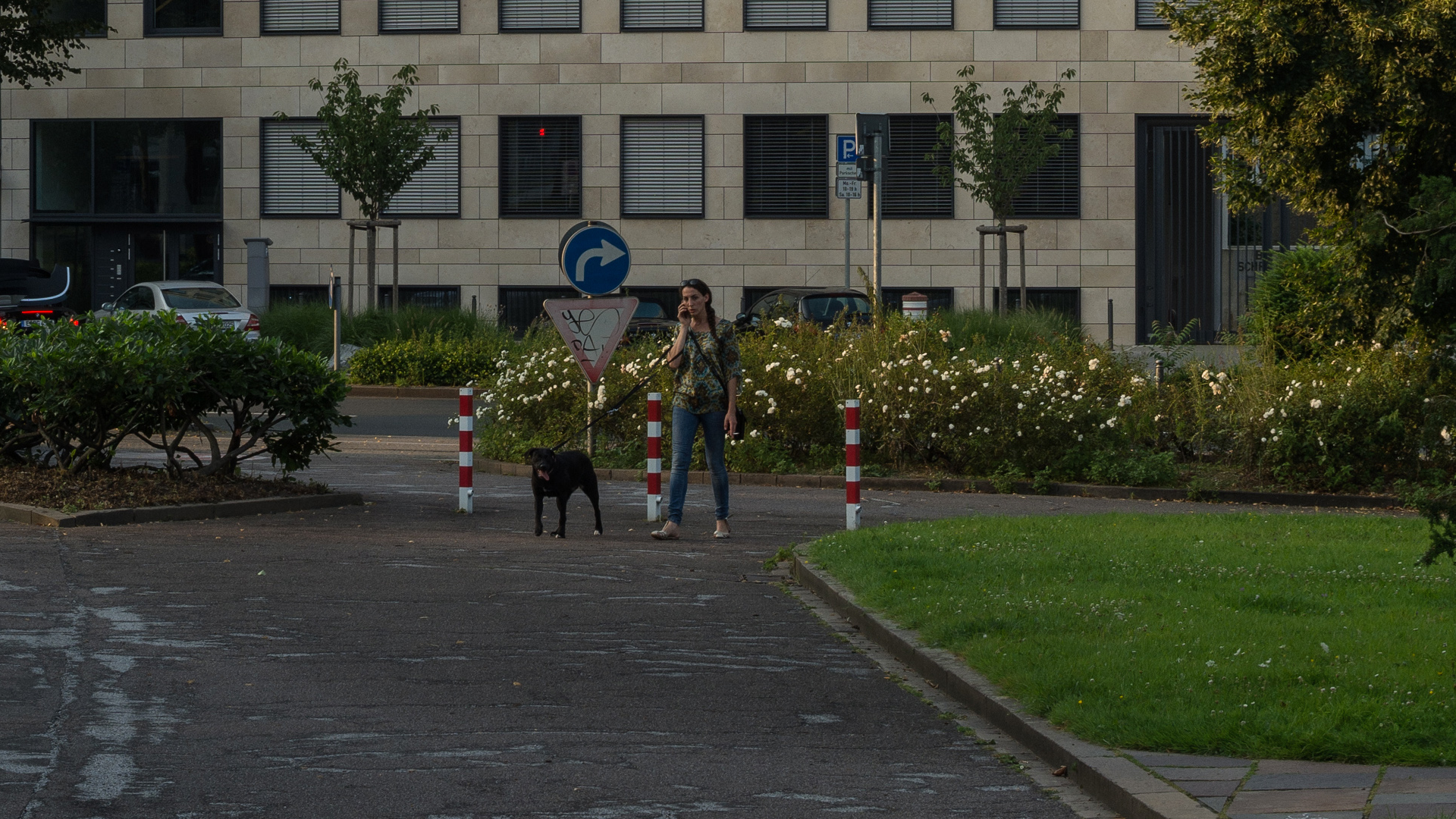
Picture from red frame, full HD resolution, scaled up to obtain 1 camera’s pixel = 1 display’s pixel
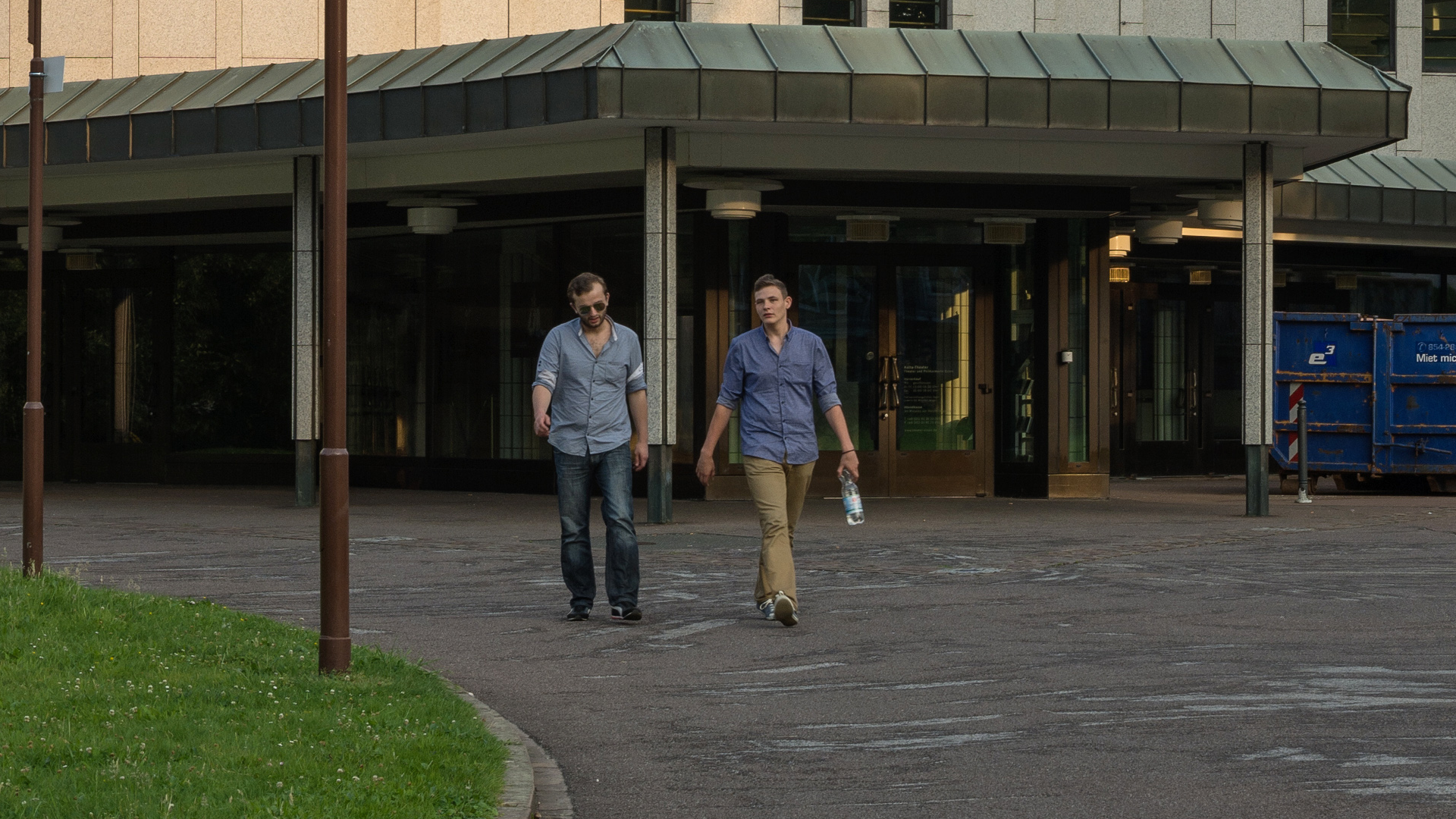
Picture from green frame, full HD resolution, scaled up to obtain 1 camera’s pixel = 1 display’s pixel
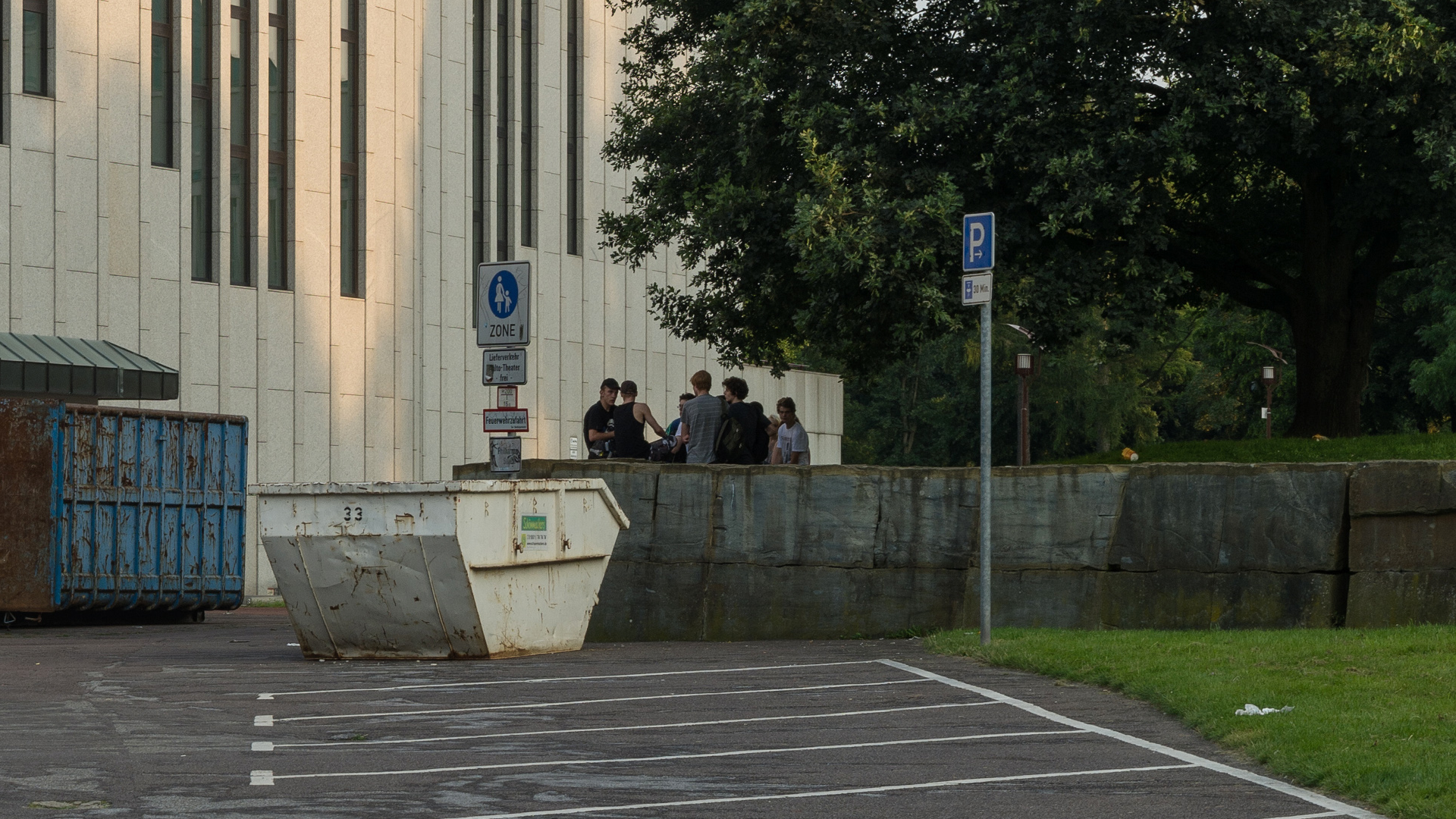
Picture from white frame, full HD resolution, scaled up to obtain 1 camera’s pixel = 1 display’s pixel
Monitor screen can be split to 4 windows, each of which can have assigned different focus point and scaling (digital zoom) on the camera frame. For example, top left window will focus on object number 1, top right window will be focused on object number 2, bottom left on object number 3 and bottom right on object number 4. We have one video stream from one camera but four points of view from four virtual cameras. Operator makes decision on which points virtual cameras should be focused. It is the biggest advantage of gigapixel video monitoring. Multiple operators can observe parts of the same gigapixel frame, each of them can select different focus point (or points) and zooming factor. It has no influence on recording because ALWAYS are recorded FULL FRAMES. It allows to see different parts of frame later.
To create Gigapixel Video Monitoring, new, more effective video compression is necessary. Stream have to be small enough to record it on existing hard disks, memory cards / pen drives or send through WiFi or Ethernet connections.
At the moment exist only one video compression technology allowing create Gigapixel Video Monitoring – HD3 developed by Patents Factory Ltd. company. Estimations shows that bitrate for 16K content should be between 9 and 17 Mbps. It is amount of data smaller than needed for 4K content coded with H264 codec.
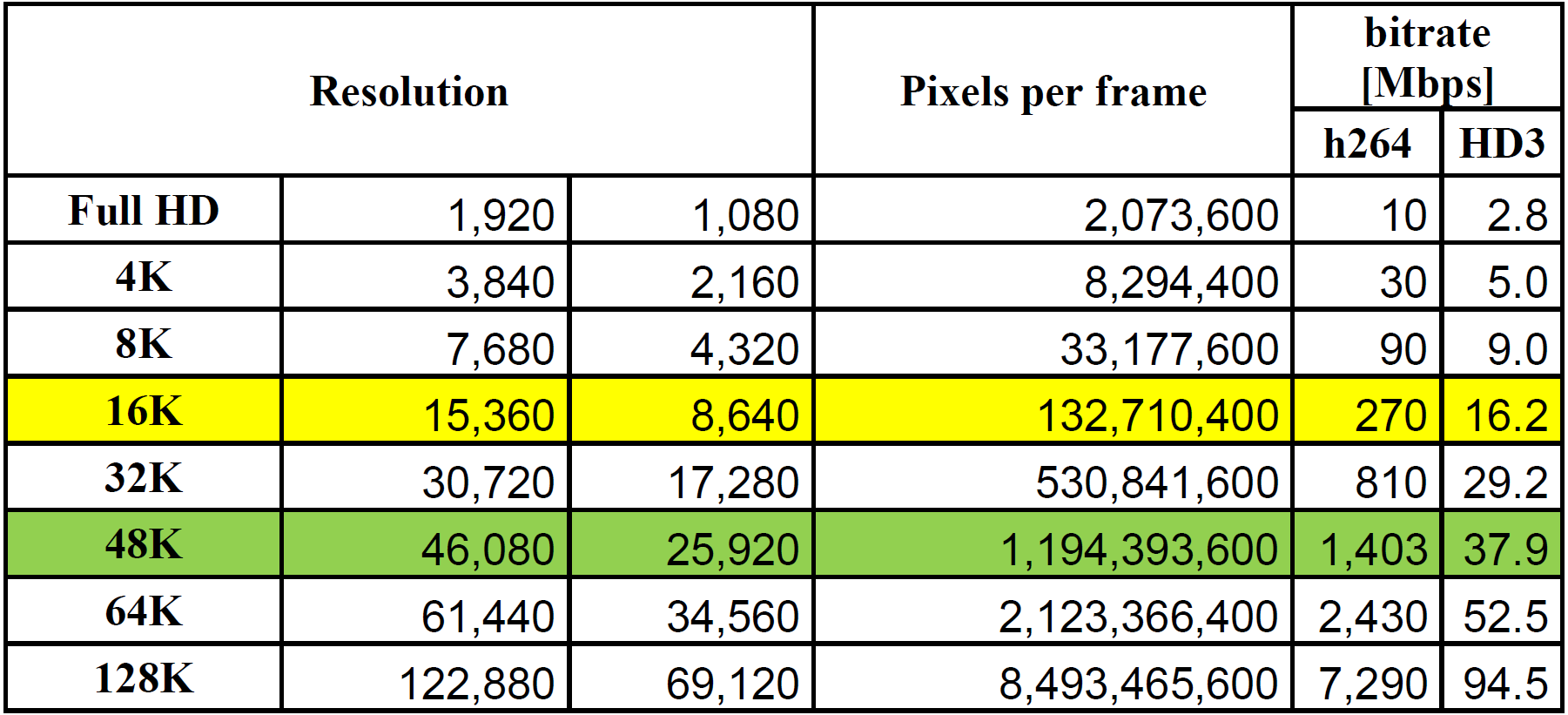
Table shows number of pixels per frame and bitrate estimated for few example resolutions and two compression technologies: H264 and HD3.
